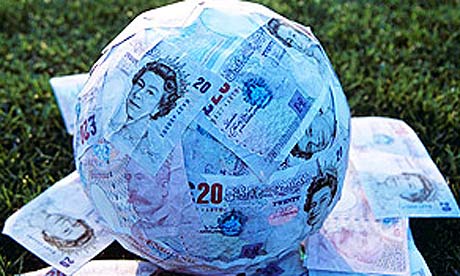 Deloitte recently published its 24th Annual Review of Football Finance and it contained some surprising results. Historically, most teams in the English Premier League (EPL) have made accounting losses with any increases in revenues being offset by higher wage costs. However, this report found that in 2013–14 most teams in the EPL actually made accounting profits.
Deloitte recently published its 24th Annual Review of Football Finance and it contained some surprising results. Historically, most teams in the English Premier League (EPL) have made accounting losses with any increases in revenues being offset by higher wage costs. However, this report found that in 2013–14 most teams in the EPL actually made accounting profits.
The Deloitte’s review reported that the combined operating profits of clubs in the EPL increased from £82 million in 2012–13 to £614 million on 2013–14 – an enormous increase of 649%. Nearly all of the teams (19 out of 20) in the league made an operating profit while 14 also reported pre-tax profits. Dan Jones, head of Deloitte’s Sports Business Group, commented that:
“The change in club profitability in 2013–14 was more profound than anything we could have forecast.”
Why has the profitability of teams in the EPL suddenly improved so dramatically? One important factor was the significant increase in revenue. The combined income of the teams was £3.26 billion in 2013–14 – an increase of £735 million, or 29% on the previous year. Although match-day and commercial revenue both increased, the majority of this growth in income (nearly 80%) came from the sale of broadcast rights. The 2013–14 season was the first year of a new three-year contract that raised over £1.7 billion per year from the sale of these rights in both the UK and overseas.
However, clubs in the EPL have received big increases in revenue from TV deals before and still made substantial accounting losses. For example, the broadcasting contract that ran from 2010–13 generated over £1.1 billion per season – a £243 million per annum increase on the previous deal. Significantly, in the first year of this deal (2010–11), 81% of this increase in revenue went straight into higher player salaries, whereas in 2013–14 this figure was only 16%. The ratio of wages to turnover also fell from 71% in 2012–13 to 58% in 2013–14
So why did a smaller proportion of the increase in revenue go to the players compared with previous years? The explanation appears to be the impact of two new controls and regulations that were implemented by the EPL at the beginning of the 2013–14 season.
One of these has received considerable media attention and is similar to UEFA’s Financial Fair Play regulations. The Profitability and Sustainability Rules allow the clubs to make a maximum cumulative loss of £105 million over three seasons before having to face sanctions from the league. The size of the permissible loss is significantly higher than in the UEFA regulations.
The other control that has received far less attention is called Short-Term Cost Control (STCC). This regulation places limits on the extent to which clubs can increase their total wage bill. It operates from 2013–14 to 2015&ndash16: i.e. it covers the same three years as the current TV deal. For the 2013–14 season it worked in the following way.
If teams had a wage bill of less than £52 million they faced no restrictions on their spending on players’ salaries. Only Crystal Palace (£46 million) and Hull City (£43 million) fell into this category. Unsurprisingly, the five biggest spending clubs, Man Utd, Man City, Chelsea, Arsenal and Liverpool, had much greater wage bills of £215m, £205m, £192m, £166m and £144m respectively.
Any of the 18 teams that exceeded the £52m limit would still not face sanctions if their wage bill increased by £4 million or less. For example, Stoke City’s wage bill only increased from £60m to £61m, while Tottenham Hotspur’s increased from £96m to £100m. Some clubs actually managed to reduce their total wage bill, including the champions, Manchester City, which managed to lower its from £233m to £215m.
However, there were still 12 teams with a total wage bill that was greater than £52 million in 2013–14 and which had increased by more than £4 million on the previous year. For these teams not to face any sanctions, they had to prove to the EPL that any of the increase above £4 million was either due to player contracts entered into before January 2013 or could by financed from the following two sources.
• Club Own Revenue Uplift
• Profit from player transfers
Whereas the profit from player transfers is straightforward, the ‘Club Own Revenue Uplift’ requires some explanation, as it excludes a very important part of teams’ incomes – Central Fund payments.
Some revenues earned by clubs in the EPL are referred to as ‘Central Fund payments’. These are, in effect, income payments from money that is raised centrally by the EPL on behalf of the clubs and then distributed to the teams using an agreed formula. The majority of the revenue generated under this category is from the broadcast deals, although some commercial income, such as the sponsorship of the league, also falls under this category. For some teams the money raised from Central Fund payments makes up the majority of their revenue.
‘Club Own Revenue’ in STCC calculations refers to all revenues other than those from Central Fund payments. This includes a number of income streams that the club has more direct control over. They include:
• Gate money/other match-day revenue
• Commercial deals negotiated by the individual club
• Income from playing in European competitions, including TV revenue.
The uplift refers to increases in revenue from these sources compared to 2012–13.
For example, assume a club has made no profit from its transfer dealing and did not enter into any significant player contracts prior to January 2013. If this club’s wage bill increased from £100m in 2012–13 to £110m in 2013–14 then it would have to provide evidence to show that £6m of this increase could be financed from growth in its Club Own Revenue. In other words, it would have to demonstrate how its income from gate money, commercial deals and playing in Europe was at least £6m higher in 2013–14 than it had been in 2012–13.
It will be interesting to see if (1) the profitability of the clubs continues to improve in future years and (2) the STCC regulations are extended when the new broadcast deal comes into effect in 2016–17.
The EPL Proves Cost Control Works The Judge 13 (4/6/15)
English Premier League clubs made more revenue than Spain and Italy’s clubs combined UK Business Insider, Lianna Brinded (4/6/15)
Premier League football club revenues and profits soar BBC News, Bill Wilson (4/6/15)
Deloitte Premier League list: Clubs’ revenue boom to £3.3billion as Tottenham record highest ever pre-tax profits after Gareth Bale transfer The Independent, Joanna Bourke (4/6/15)
Annual Review of Football Finance 2015 Premier League clubs generate over £3bn revenue in season of records Deloitte (4/6/15)
Premier League top of the rich list with record income of £3.26bn The Guardian, David Conn (4/6/15)
Questions
- What is the difference between an operating profit and a pre-tax profit?
- If a club reports that it is making an accounting profit, does this mean that it must be making an economic profit? Explain your answer.
- Give some examples of the economic costs of running a football club that might not be included in accounting calculations of profit.
- How is the profit/loss from player transfers calculated?
- Explain why the current rules may give teams that play in European competitions a competitive advantage.
 The recent low price of oil has been partly the result of faltering global demand but mainly the result of increased supply from shale oil deposits. The increased supply of shale oil has not been offset by a reduction in OPEC production. Quite the opposite: OPEC has declared that it will not cut back production even if the price of oil were to fall to $30 per barrel.
The recent low price of oil has been partly the result of faltering global demand but mainly the result of increased supply from shale oil deposits. The increased supply of shale oil has not been offset by a reduction in OPEC production. Quite the opposite: OPEC has declared that it will not cut back production even if the price of oil were to fall to $30 per barrel.
We looked at the implications for the global economy in the post, A crude indicator of the economy (Part 2). We also looked at the likely effect on oil prices over the longer term and considered what the long-run supply curve might look like. Here we examine the long-run effect on prices in more detail. In particular, we look at the arguments of two well-known commentators, Jim O’Neill and Anatole Kaletsky, both of whom have articles on the Project Syndicate site. They disagree about what will happen to oil prices and to energy markets more generally in 2015 and beyond.
Jim O’Neill argues that with shale oil production becoming unprofitable at the low prices of late 2014/early 2015, the oil price will rise. He argues that a good indicator of the long-term equilibrium price of oil is the five-year forward price, which is much less subject to speculation and is more reflective of the fundamentals of demand and supply. The five-year forward price is around $80 per barrel – a level to which O’Neill thinks oil prices are heading.
 Anatole Kaletsky disagrees. He sees $50 per barrel as a more likely long-term equilibrium price. He argues that new sources of oil have made the oil market much more competitive. The OPEC cartel no longer has the market power it had from the mid 1970s to the mid 1980s and from the mid 2000s, when surging Chinese demand temporarily created a global oil shortage and strengthened OPEC’s control of prices. Instead, the current situation is more like the period from 1986 to 2004 when North Sea and Alaskan oil development undermined OPEC’s power and made the oil market much more competitive.
Anatole Kaletsky disagrees. He sees $50 per barrel as a more likely long-term equilibrium price. He argues that new sources of oil have made the oil market much more competitive. The OPEC cartel no longer has the market power it had from the mid 1970s to the mid 1980s and from the mid 2000s, when surging Chinese demand temporarily created a global oil shortage and strengthened OPEC’s control of prices. Instead, the current situation is more like the period from 1986 to 2004 when North Sea and Alaskan oil development undermined OPEC’s power and made the oil market much more competitive.
Kaletsky argues that in a competitive market, price will equal the marginal cost of the highest cost producer necessary to balance demand and supply. The highest cost producers in this case are the shale oil producers in the USA. As he says:
Under this competitive logic, the marginal cost of US shale oil would become a ceiling for global oil prices, whereas the costs of relatively remote and marginal conventional oilfields in OPEC and Russia would set a floor. As it happens, estimates of shale-oil production costs are mostly around $50, while marginal conventional oilfields generally break even at around $20. Thus, the trading range in the brave new world of competitive oil should be roughly $20 to $50.
So who is right? Well, we will know in twelve months or more! But, in the meantime, try to use economic analysis to judge the arguments by answering the questions below.
The Price of Oil in 2015 Project Syndicate, Jim O’Neill (7/1/15)
A New Ceiling for Oil Prices Project Syndicate, Anatole Kaletsky (14/1/15)
Questions
- For what reasons might the five-year forward price of oil be (a) a good indicator and (b) a poor indicator of the long-term price of oil?
- Under O’Neill’s analysis, what would the long-term supply curve of oil look like?
- Are shale oil producers price takers? Explain.
- Draw a diagram showing the marginal and average cost curves of a swing shale oil producer. Put values on the vertical axis to demonstrate Kaletsky’s arguments. Also put average and marginal revenue on the diagram and show the amount of profit at the maximum-profit point.
- Why are shale oil producers likely to have much higher long-run average costs than short-run variable costs? How does this affect Kaletsky’s arguments?
- Under Kaletsky’s analysis, what would the long-term supply curve of oil look like?
- Criticise Kaletsky’s arguments from O’Neill’s point of view.
- Criticise O’Neill’s arguments from Kaletsky’s point of view.
- Will OPEC’s policy of not cutting back production help to restore its position of market power?
- Why might the fall in the oil price below $50 in early 2015 represent ‘overshooting’? Why does overshooting often occur in volatile markets?
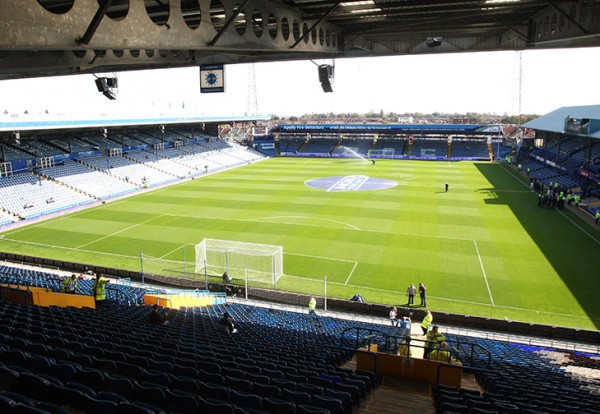 Most observers were once again left stunned by how much media companies are willing to pay to secure the rights to broadcast live games in the English Premier League (EPL). At the same time the method used to sell those rights is being investigated by Ofcom following complaints made by Virgin Media. Virgin Media actually requested that the auction was halted until the investigation was completed.
Most observers were once again left stunned by how much media companies are willing to pay to secure the rights to broadcast live games in the English Premier League (EPL). At the same time the method used to sell those rights is being investigated by Ofcom following complaints made by Virgin Media. Virgin Media actually requested that the auction was halted until the investigation was completed.
Between them, BSkyB and BT Sport have paid £5.136bn to purchase the rights to broadcast live matches in the EPL over a three-year period beginning in the 2016–17 season. This is a 71% increase in the price paid for the previous three-year deal which runs from 2013 to 2016 and cost £3.018bn. However, the headline figure hides some big differences between the amounts paid by the two companies.
How exactly are the rights sold? The broadcast rights for the 168 live matches are split up into seven different packages labelled A through to G and are placed in seven different auctions. The type of auction used by the EPL is a sealed bid auction. Interested companies are invited to make an offer for any of the packages. However, when they make a bid they do not know (a) if other firms have also made a bid and (b) the size of any other bids. Another constraint is that one firm is not allowed to win more than five of the auctions. When the auction finishes the EPL only releases information about the winning offers. It never provides information about any of the failed bids.
Some of the packages are worth more than others to the broadcasters. The first five packages (A–E) each contain the rights for 28 games per season, while the other two packages (F and G) contain the rights for 14 matches. In some of the packages all of the games kick off at the same time and on the same day. For example all 28 games in package ‘A’ kick off at 12.30pm on a Saturday. Others contain more of a mixture. Some of the games in Package E take place on a Monday evening. while others take place on a Friday evening. Given the potential advertising revenue and number of viewers, the most valuable package is D, which has 28 games that kick off at 4.00pm on a Sunday.
Another factor that influences the value of a package is the number of ‘first picks’. In any given week, more than one broadcaster might want to screen the same match. To overcome this problem, each package is allocated a number of first, second, third, fourth and fifth ‘picks’. For example, package D comes with 18 first and 10 fourth round picks. This means that whichever company wins this package will get first choice on the games they want to broadcast on 18 occasions a year. Package C contains no ‘first picks’ but offers 15 second, 4 fourth and 7 fifth round picks. There is also a maximum and a minimum limit on the number of times games including a specific team can be broadcast.
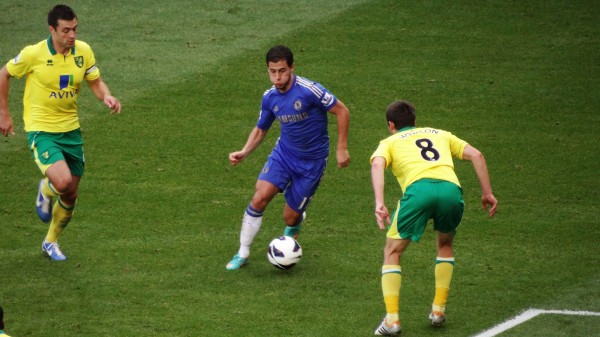
BSkyB won the auctions for packages A, C, D, E and G for a price of £4.17bn. This means that it will be paying £1.396bn to broadcast 126 live games per season. This is an average payment of £11,031,700 per game. In the previous deal it paid £760million for the rights to broadcast 116 live games per season. This is an average payment of £6,551,724 per game. The new deal represents a cost increase of 68% per game. However, the number of first picks BskyB has secured in the new deal increases from 20 to 26.
BTSport won the auctions for packages B and F for a price of £960m. This means that it will be paying £320m for the rights to broadcast 42 live games per season. This is an average payment of £7,619,048 per game. In the previous deal it paid £246 million per year for the rights to broadcast 38 live games per season. This is an average payment of £6,473,684 per game. The new deal represents an increase in costs of 17.7% per game for BT Sport – a much lower figure than for BSkyB.
BSkyB has stated that it will cover the increase in the price it has paid for the rights with efficiency savings. However, many observers believe that it will ultimately result in significant increases in the subscription rates for SkySports. The impact of the deal on BskyB’s profit may well depend on the willingness of its customers to pay higher prices. What is the price elasticity of demand for SkySports at the current subscription rates they are charging?
There is still some uncertainty about the deal following Ofcom’s decision to investigate the legitimacy of the method used by the EPL to auction the rights. Virgin Media made a formal complaint in September 2014 about the collective selling of the live broadcast rights and argued that it was in breach of competition law. The investigation by Ofcom will make a judgment about whether the joint selling of the rights by the EPL is a contravention of Chapter I of the Competition Act 1998 and/or Article 101(1) of the Treaty on the Functioning of the European Union. An initial announcement will be made in March.
Premier League set to announce record £4.4bn TV rights deal BBC Sport (10/2/15)
Premier League TV rights: What does deal mean for fans & clubs BBC Sport, Ben Smith (11/2/15)
How Sky paid £4m more per Premier League match than BT The Telegraph, Ben Rumsby (11/2/15)
Premier League TV deal: Windfall must benefit grass roots and England The Telegraph, Henry Winter (10/2/15)
Sky and BT retain Premier League TV rights for record £5.14bn The Guardian, Owen Gibson (10/2/15)
Premier League TV rights: Sky Sports and BT Sport win UK broadcasting rights as price tops £5billion Independent, Tom Peck (10/2/15)
Questions
- Draw a demand curve for package A and package D of the live broadcast rights. Which one do you think will be furthest to the right? Explain your answer.
- What are the potential benefits to the EPL of not revealing the details of any of the losing bids?
- Explain how the price elasticity of demand is a useful concept for assessing the impact of the new deal on the profits of BSkyB and BTSport.
- Given the impact of the new deal of the size of Parachute payments, what impact might it have on the level of competitive balance in the Championship?
- Find out the key provisions of Chapter I of the Competition Act 1998 and Article 101(1) of the Treaty on the Functioning of the European Union.
 Virtually all manual toothbrushes sold in the UK are made by Oral B (Procter & Gamble), Colgate (Colgate-Palmolive) or Listerene Reach (Johnson & Johnson). This is a powerful oligopoly.
Virtually all manual toothbrushes sold in the UK are made by Oral B (Procter & Gamble), Colgate (Colgate-Palmolive) or Listerene Reach (Johnson & Johnson). This is a powerful oligopoly.
The manufacturers distribute toothbrushes primarily through large powerful retailers, such as supermarkets and Boots. It is difficult for new entrants to persuade these retailers to stock their product. What is more, with large advertising and marketing budgets, existing toothbrush manufacturers make it difficult for new brands to attract customers.
But one company has successfully entered the children’s section of the market when Boots  agreed to stock its product. The Rockabilly Kids toothbrush has a feature likely to appeal to both children and their parents. It wobbles! With a weight in the bottom, the brush rights itself, with a wobble, when dropped or simply placed on the basin or shelf.
agreed to stock its product. The Rockabilly Kids toothbrush has a feature likely to appeal to both children and their parents. It wobbles! With a weight in the bottom, the brush rights itself, with a wobble, when dropped or simply placed on the basin or shelf.
This clearly appeals to small kids. It also appeals to their parents who can do away with unhygienic toothbrush holders. What is more, the self-righting wobbly toothbrush, by making the whole process of teeth cleaning fun for young kids, can help them gain good habits of oral hygiene.
So just how did the manufacturer overcome the barriers to entry into this well-established oligopoly? The following article examines how.
Can ‘wobbly’ kids toothbrushes shake the Oral B/Colgate oligopoly? The Telegraph, Rebecca Burn-Callander (10/1/15)
Questions
- What barriers to entry exist in the manual toothbrush market?
- How did Hamish Khayat overcome these barriers?
- Why did he decide against a toothbrush subscription service?
- How would you decide whether £6.99 is the right price?
- Is it a good idea for him to diversify into electric kids toothbrushes?
- How are the big toothbrush manufacturers likely to respond to the expansion of Rockabilly Kids?
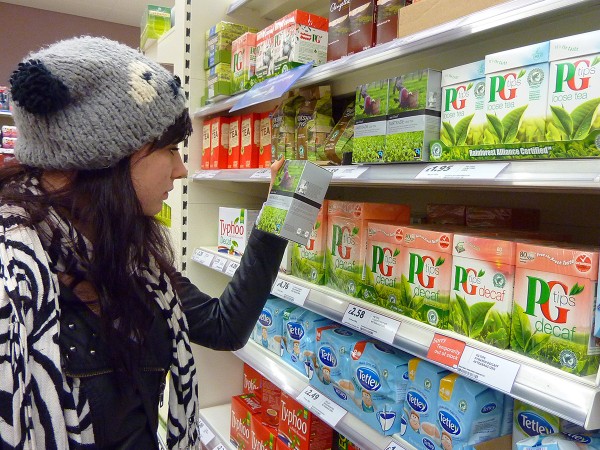 The retail food industry is an oligopoly – a market dominated by a few big firms, with interdependence between them. This means that each firm considers the reaction of all its competitors when making any decision. Pricing is one of those key decisions and this is one of the reasons why price wars tend to break out in this industry.
The retail food industry is an oligopoly – a market dominated by a few big firms, with interdependence between them. This means that each firm considers the reaction of all its competitors when making any decision. Pricing is one of those key decisions and this is one of the reasons why price wars tend to break out in this industry.
For consumers, price wars are usually seen as a good thing, as it means prices in the supermarkets get forced downwards, thus reducing the cost of living. Low prices in this case are one of the key benefits of competition. However, there are costs of such fierce competition for suppliers. 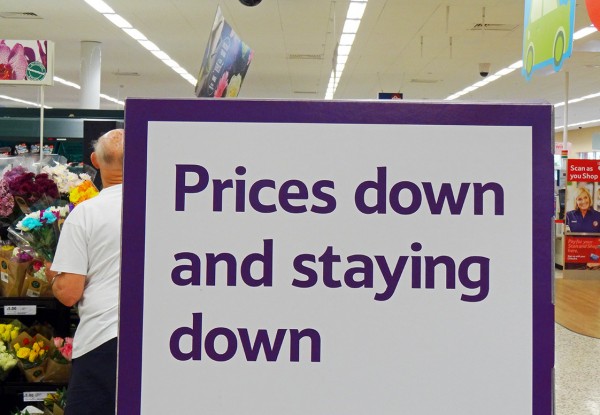 As final prices to customers are pushed down, small competitors are likely to feel the squeeze and may be forced out of the market. The other losers are suppliers. The big supermarkets are likely to pay lower prices to their suppliers, thus adversely affecting their livelihood. Research suggests that throughout 2014, 146 food producers entered insolvency, which is significantly higher than last year.
As final prices to customers are pushed down, small competitors are likely to feel the squeeze and may be forced out of the market. The other losers are suppliers. The big supermarkets are likely to pay lower prices to their suppliers, thus adversely affecting their livelihood. Research suggests that throughout 2014, 146 food producers entered insolvency, which is significantly higher than last year.
Accountancy firm, Moore Stephens, has blamed the supermarket price war for this rise in insolvencies in the food production sector. Duncan Swift from this firm said:
“The supermarkets are going through the bloodiest price war in nearly two decades and are using food producers as the cannon fodder…Supermarkets have engaged in questionable buying practices for years, but it’s getting worse and clearly wreaking havoc on the UK food production sector.”
The British Retail Consortium has said that placing the blame in this way was too simplistic. A commentator suggested that many suppliers have long-standing relationships with the supermarkets they deal with, suggesting that relations were good and sustainable.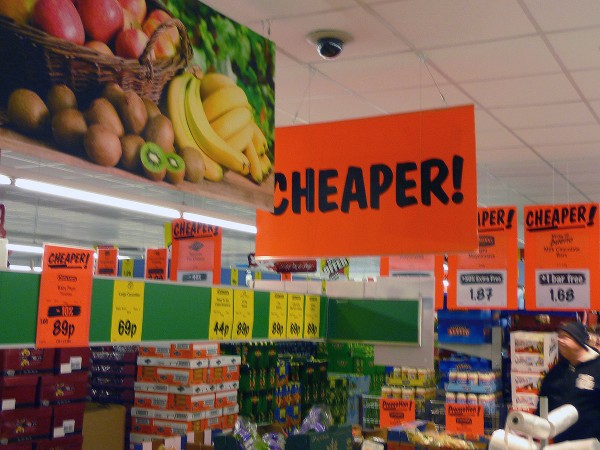 Furthermore, it was suggested that the demise of these producers may be due to many other factors and the data on insolvencies did not show that those firms affected were suppliers to the supermarkets. There is a Groceries Code Adjudicator in place to ensure that the supermarkets do not abuse their power when it comes to dealing with their suppliers, but the power of this person is limited, leaving suggestions remaining that suppliers are vulnerable. The following articles consider both the good and bad of price wars.
Furthermore, it was suggested that the demise of these producers may be due to many other factors and the data on insolvencies did not show that those firms affected were suppliers to the supermarkets. There is a Groceries Code Adjudicator in place to ensure that the supermarkets do not abuse their power when it comes to dealing with their suppliers, but the power of this person is limited, leaving suggestions remaining that suppliers are vulnerable. The following articles consider both the good and bad of price wars.
Articles
Questions
- What are the characteristics of an oligopoly? Why do price wars tend to break out in oligopolies, such as the supermarket industry?
- Apart from the supply-chain pressure from supermarkets, what other factors could have caused so many small food producers to become insolvent?
- How does the supermarket supply chain work and why have the price wars led to suppliers being squeezed?
- Use a diagram to illustrate the impact of the price war on (a) the supermarkets and (b) the suppliers.
- How important is the Groceries Code Adjudicator and should she be doing more to protect suppliers?
- If supermarkets are cutting prices, is this an indicator of unfair competition or good competition?
 Deloitte recently published its 24th Annual Review of Football Finance and it contained some surprising results. Historically, most teams in the English Premier League (EPL) have made accounting losses with any increases in revenues being offset by higher wage costs. However, this report found that in 2013–14 most teams in the EPL actually made accounting profits.
Deloitte recently published its 24th Annual Review of Football Finance and it contained some surprising results. Historically, most teams in the English Premier League (EPL) have made accounting losses with any increases in revenues being offset by higher wage costs. However, this report found that in 2013–14 most teams in the EPL actually made accounting profits.







